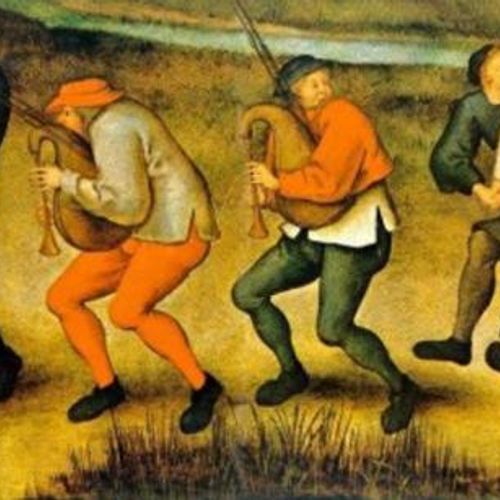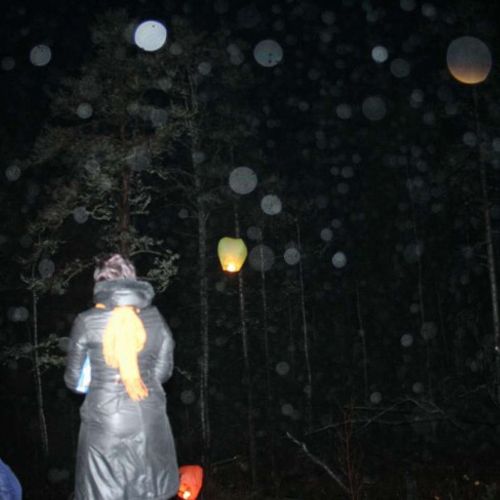
| Added | Wed, 16/03/2022 |
| Источники | |
| Дата публикации | Wed, 16/03/2022
|
| Версии |
Mass hysteria is a term used to describe a situation in which physical or psychological symptoms manifest massively, spreading rapidly through communities, and sometimes entire cities and countries.
During an outbreak, people may experience uncontrollable laughter, fainting, seizures, dizziness, muscle weakness, or any other symptoms that have no physical cause. Cases of hysteria have been recorded around the world for centuries and provide a fascinating insight into the complex nature of human psychology.
The term "hysteria" comes from the Greek word "hystera", meaning "uterus", and is usually attributed to the ancient Greek physician Hippocrates. However, the association with the uterus dates back to the ancient Egyptian papyrus Kahun (1900 BC), in which the cause of hysterical disorders is called spontaneous movement of the uterus to various places of the female body.
By the Middle Ages, this was replaced by a belief in witchcraft, demon possession, or insanity as the cause. Although cases of mass hysteria continue to baffle the medical community, it is now generally believed that it is associated with extreme cases of emotional or mental stress.
Here is a look at some famous and strange cases of mass hysteria in history.
Medieval dance mania (13th-17th centuries)
The dance mania, also known as the dance plague, the dance of St. John or the dance of St. Vitus, swept continental Europe in the period from the XIII to the XVII century. One of the most famous major outbreaks occurred in Aachen, Germany, on June 24, 1374. During this outbreak, sick people danced hysterically in the streets for hours, days, and possibly even months until they collapsed from exhaustion or died of a heart attack or stroke. The number of participants in one outbreak could reach thousands of people.
It is known that the "dancing plague" repeatedly arose throughout medieval Europe, outbreaks of the disease occurred in Italy, Luxembourg, France, Germany, Holland and Switzerland. Initially, it was believed that dance mania was a curse sent by a saint, who was usually considered Saint John the Baptist or Saint Vitus, hence the alternative names of this disease. Therefore, people suffering from this condition went to places dedicated to this saint to pray for deliverance from the disease, and this "remedy" obviously returned many to full health.
Biting Nuns (15th century)
In the 15th century, there was another outbreak of mass hysteria in Germany when a nun in a monastery started biting other sisters. Soon this behavior spread throughout the monastery, and as the news spread around the world, this phenomenon spread, leading to outbreaks of bites in monasteries in Germany, the Netherlands and Italy.
According to the description of a doctor of the XV century: "One nun in a German convent began to bite all her companions. Within a short time, all the nuns of this monastery started biting each other. The news about this hobby of the nuns soon spread, and now she was moving from monastery to monastery all over Germany, mainly in Saxony, and then visited the monasteries of Holland, and finally the bite mania even reached Rome."
The church believed that the nuns had become possessed, and tried to perform an exorcism, but this did not help to stop their behavior. In the end, they resorted to threats of flogging or dipping in water for any nun caught biting another. After several examples of punishing nuns, the behavior quickly came to naught.
Salem Witch Trials (1692-1693)
One of the most famous cases of mass hysteria occurred in Salem, Massachusetts, in 1692. Dozens of young girls showed bouts of uncontrollable screaming and distortion, which eventually caused a flood of accusations of witchcraft. The result was a series of hearings and prosecutions of people accused of witchcraft, known as the Salem Witch Trials, which resulted in the deaths of 25 residents of Salem and nearby towns.
The Salem Witch Trials, which have become a highly influential event in U.S. history, have been used in political rhetoric and popular literature to highlight the dangers of isolationism, religious extremism, false accusations and violations of due process.
French Meowing Nuns (19th century)
Institutional institutions such as schools, prisons, and close-knit communities were often the scene of outbreaks of mass hysteria, and European Christian monasteries were no exception. In the book "Epidemics of the Middle Ages", written in 1844 by J. F. K. Hecker, there is a story about a nun in a convent in France who began to meow like a cat. Soon after, other nuns began to exhibit the same behavior, until the entire monastery began to suffer from meowing nuns. This worried the surrounding Christians, and eventually soldiers were called in to try to contain the situation. The nuns were flogged and beaten by soldiers until they promised to stop making shrill noises. During this era, the belief in possession was widespread, and in France cats were often considered to be in league with the devil.
The Epidemic of laughter in Tanganyika (1962)
The epidemic of laughter in Tanganyika began on January 30, 1962 at a boarding school for girls at the mission in Kashasha, Tanzania. The laughter started among the three girls, but quickly spread throughout the school, lasting for several hours, days, and then weeks, leading to its closure on March 18, 1962. But it didn't end there. After the closure of the school, mass hysteria spread to other schools and eventually to nearby villages. The epidemic affected thousands of children, and 14 schools were forced to close. In the end, the hysteria came to naught eighteen months after it began.
Modern explanation
The cases associated with the spread of mass hysteria may seem contradictory to an increasingly educated public that no longer relies on wandering wombs, demon possession and witchcraft as an explanation. However, cases of mass hysteria continue to occur; one of the most recent occurred in 2012, when 1,900 children from 15 schools in Sri Lanka were treated for a number of symptoms, including skin rash, dizziness and cough, which had no obvious physical cause.
Although cases of hysteria can easily be mistaken for funny and strange behavior, studies have shown that there are a number of complex factors that can contribute to the formation and spread of collective hysteria, including social anxiety, cultural pressure, rumors, fears, extreme excitement, religious beliefs, reinforcement of actions by authoritative persons and severe stress.
Social, political and religious conditions have changed over the centuries, but human psychology has largely remained the same, and it is for this reason that we are likely to see many more cases of mass hysteria in the future.
Новости со схожими версиями
Log in or register to post comments






